Premium Only Content
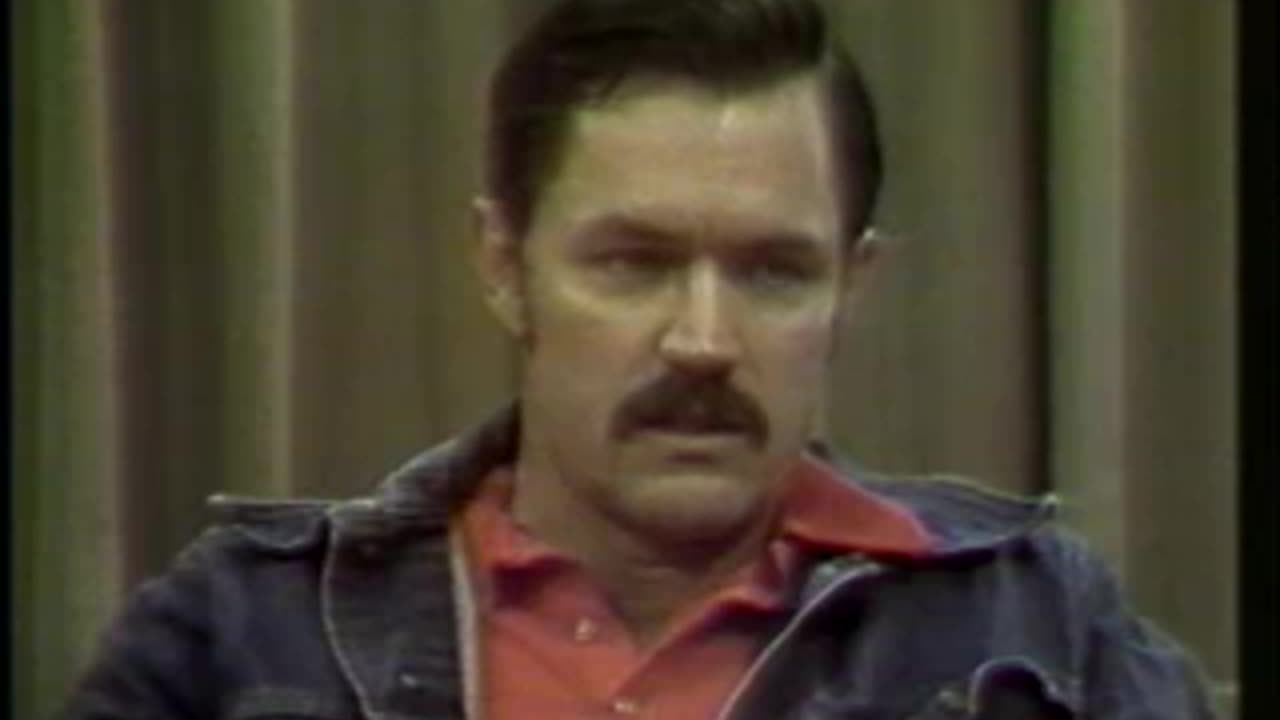
Manipulating America
The dark side of history: https://thememoryhole.substack.com/
The Nicaraguan Revolution (Spanish: Revolución Nicaragüense or Revolución Popular Sandinista) encompassed the rising opposition to the Somoza dictatorship in the 1960s and 1970s, the campaign led by the Sandinista National Liberation Front (FSLN) to oust the dictatorship in 1978–79, the subsequent efforts of the FSLN to govern Nicaragua from 1979 to 1990,[28] and the Contra War, which was waged between the FSLN-led government of Nicaragua and the United States–backed Contras from 1981 to 1990. The revolution marked a significant period in the history of Nicaragua and revealed the country as one of the major proxy war battlegrounds of the Cold War, attracting much international attention.
The initial overthrow of the Somoza dictatorial regime in 1978–79 was a dirty affair, and the Contra War of the 1980s took the lives of tens of thousands of Nicaraguans and was the subject of fierce international debate. Because of the political turmoil, failing economy, and decreasing government influence, during the 1980s both the FSLN (a leftist collection of political parties) and the Contras (a rightist collection of counter-revolutionary groups) received large amounts of aid from the Cold War superpowers (respectively, the Soviet Union and the United States).
A peace process started with the Sapoá Accords in 1988 and the Contra War ended after the signing of the Tela Accord in 1989 and the demobilization of the FSLN and Contra armies.[29] A second election in 1990 resulted in the election of a majority of anti-Sandinista parties and the FSLN handing over power.
Background
Main article: Somoza family
Following the United States occupation of Nicaragua in 1912 during the Banana Wars, the Somoza family political dynasty came to power, and would rule Nicaragua from 1937 until their ouster in 1979 during the Nicaraguan Revolution. The Somoza dynasty consisted of Anastasio Somoza García, his eldest son Luis Somoza Debayle, and finally Anastasio Somoza Debayle. The era of Somoza family rule was characterized by economic development albeit with rising inequality and political corruption, strong US support for the government and its military,[30] as well as a reliance on US-based multinational corporations.[31]
Rise of the FSLN
In 1961 Carlos Fonseca Amador, Silvio Mayorga, and Tomás Borge Martínez formed the FSLN (Sandinista National Liberation Front) with other student activists at the Universidad Nacional Autonoma de Nicaragua (UNAN) in Managua. For the founding members of the FSLN, this was not their first experience with political activism. Amador, first General Secretary of the organization, had worked with others on a newspaper "broadly critical" of the Somoza reign titled Segovia.[32]
Consisting of approximately 20 members during the 1960s, with the help of students, the organization gathered support from peasants and anti-Somoza elements within Nicaraguan society, as well as from the communist Cuban government, and the socialist Panamanian government of Omar Torrijos, and the social democratic Venezuelan government of Carlos Andrés Pérez.[33]
By the 1970s the coalition of students, farmers, businesses, churches, and a small percentage of Marxists was strong enough to launch a military effort against the regime of longtime dictator Anastasio Somoza Debayle. The FSLN focused on guerrilla tactics almost immediately, inspired by the campaigns of Fidel Castro and Ché Guevara. Penetrating the Northern coast of Nicaragua, the Río Coco/Bocay-Raití campaign was largely a failure: "when guerrillas did encounter the National Guard, they had to retreat...with heavy losses."[34] Further operations included a devastating loss near the city of Matagalpa, during which Mayorga was killed, which led Fonseca to a "prolonged period of reflection, self-criticism and ideological debate."[35] During this time, the FSLN reduced attacks, instead focusing on solidifying the organization as a whole.
Fonseca died in combat in November of 1976. After his death, the FSLN split into three factions which fought separately: Tendencia GPP (Guerra Popular Prolongada) (English: Prolonged People's War), which followed Maoist ideas; Tendencia Proletaria (English: proletarian), which followed Marxist-Leninist ideas; and Tendencia Tercerista (English: third), which pursued politically Left-wing nationalism, compromise with the liberal opposition, and liberation theology.
Overthrow of the Somoza regime
An M4 Sherman tank of the Nicaraguan National Guard during clashes with Sandinista rebels in Estelí, 1979
In the 1970s, the FSLN began a campaign of kidnappings, which led to national recognition of the group in the Nicaraguan media and solidification of the group as a force in opposition to the Somoza Regime.[33] The Somoza Regime, which included the Nicaraguan National Guard, a force highly trained by the U.S. military, declared a state of siege, and proceeded to use torture, extrajudicial killings, intimidation and censorship of the press in order to combat the FSLN attacks.[33] This led to international condemnation of the regime and in 1978 the administration of U.S. president Jimmy Carter cut off aid to the Somoza regime due to its human rights violations. In response, Somoza lifted the state of siege in order to continue receiving aid.[10]
Other opposition parties and movements also started a process of consolidation. In 1974, the Unión Democrática Liberal (UDEL; English: Union for Democratic Liberation) was founded by Pedro Joaquín Chamorro Cardenal, editor of the Managua newspaper La Prensa. The alliance included two anti-Somoza liberal parties as well as some conservatives and even the Nicaraguan Socialist Party.[36]
On 10 January 1978 Cardenal was murdered by suspected elements of the Somoza regime, and riots broke out in the capital city, Managua, targeting the Somoza regime.[37] Following the riots, a general strike on 23–24 January called for the end of the Somoza regime and was, according to the U.S. State Department staff at the U.S. Embassy, successful at shutting down around 80% of businesses in not only Managua but also the provincial capitals of León, Granada, Chinandega, and Matagalpa.[37]
In the words of William Dewy, an employee of Citi Bank who witnessed the riots in Managua:
Our offices at the time were directly across the street from La Prensa and in the fighting that followed part of our branch was burned, but not intentionally. They were going after the Somoza-owned bank. In the turmoil they torched the [Somoza] bank and our building also burnt down. It was clear [to the U.S. business community] that the Chamorro assassination had changed things dramatically and permanently for the worse. — Interview with Morris H. Morley, 17 October 1987[37]
On 22 August 1978 the FSLN staged a massive kidnapping operation. Led by Éden Pastora, the Sandinistan forces captured the National Palace while the legislature was in session, taking 2,000 hostages. Pastora demanded money, the release of Sandinistan prisoners, and "a means of publicizing the Sandinista cause."[10] After two days, the government agreed to pay $500,000 and to release certain prisoners, marking a major victory for the FSLN.[33] Revolts against the state and guerrilla warfare continued as the Sandinistas received material support from Venezuela and Panama. Further support would stem from Cuba in the form of "arms and military advising."[10]
In early 1979 the Organization of American States supervised negotiations between the FSLN and the government. However, these broke down when it became clear that the Somoza regime had no intention of allowing democratic elections to take place.
By June 1979, following a successful urban offensive, the FSLN militarily controlled all of the country except the capital. On 17 July President Somoza resigned, and on 19 July the FSLN entered Managua,[33] giving full control of the government to the revolutionary movements. Somoza fled to Miami; his Nationalist Liberal Party became practically decapitated, and many of its functionaries as well as business figures overtly compromised with somocismo chose the exile. The Catholic church and the professional sectors generally approved of the new reality.[38]
Sandinista government
Immediately following the fall of the Somoza regime, Nicaragua was largely in ruins. The country had suffered both war and, earlier, natural disaster in the devastating 1972 Nicaragua earthquake. In 1979, approximately 600,000 Nicaraguans were homeless and 150,000 were either refugees or in exile,[39] out of a total population of just 2.8 million.[40]
In response to these issues, a state of emergency was declared. President Carter sent US$99 million in aid. Land and businesses of the Somoza regime were expropriated, the old courts were abolished, and workers were organized into Civil Defense Committees. The new regime also declared that "elections are unnecessary", which led to criticism from the Catholic Church, among others.[10]
Economic reforms
Nicaragua's inflation rate between 1980 and 1993
The Revolution ended the burden the Somocista regime had imposed upon the Nicaraguan economy and which had seriously deformed the country, creating a big and modern center, Managua, where Somoza's power had emanated to all corners of the territory. Somoza had developed an almost semifeudalist rural economy with few productive goods, such as cotton, sugar and other tropical agricultural products. All sectors of the economy of Nicaragua were determined, in great part if not entirely, by the Somozas or the officials and others surrounding the regime, whether by directly owning agricultural brands and trusts, or actively putting them into local or foreign hands. It is famously stated that Somoza himself owned 1/5 of all profitable land in Nicaragua. While this is not correct, Somoza or his adepts did own or give away banks, ports, communications, services and massive amounts of land.[41]
The Nicaraguan Revolution brought immense restructuring and reforms to all three sectors of the economy, directing it towards a mixed economy system. The biggest economic impact was on the primary sector, agriculture, in the form of the Agrarian Reform, which was not proposed as something that could be planned in advance from the beginning of the Revolution but as a process that would develop pragmatically along with the other changes (economic, political, etc.) that would arise during the Revolution period.[42]
Economic reforms overall needed to rescue out of limbo the inefficient and helpless Nicaraguan economy. As a Third World country, Nicaragua had, and has, an agriculture-based economy, undeveloped and susceptible to the flow of market prices for its agricultural goods, such as coffee and cotton. The Revolution faced a rural economy well behind in technology and, at the same time, devastated by the guerrilla warfare and the soon to come civil war against the Contras.
Article 1 of the Agrarian Reform Law says that property is guaranteed if it laboured efficiently and that there could be different forms of property:
state property (with the confiscated land from somocistas)
cooperative property (part of confiscated land, but without individual certificates of ownership, to be laboured efficiently)
communal property (in response to reinvindication from people and communities from Miskito regions in the Atlantic)
individual property (as long as this is efficiently exploited and integrated to national plans of development)[42]
The principles that presided Agrarian Reform were the same ones for the Revolution: pluralism, national unity and economic democracy.[42]
The Nicaraguan Agrarian Reform developed into four phases:
phase (1979): confiscation of property owned by Somocistas and its adepts
phase (1981): Agrarian Reform Law of 19 July 1981
phase (1984–85): massive cession of land individually, responding to demands from peasantry
phase (1986): Agrarian Reform Law of 1986, or "reform to the 1981 Law"
In 1985, the Agrarian Reform distributed 950 square kilometres (235,000 acres) of land to the peasantry. This represented about 75 percent of all land distributed to peasants since 1980. According to Project, the agrarian reform had the twofold purpose of increasing the support for the government among the campesinos, and guaranteeing ample food delivery into the cities. During 1985, ceremonies were held throughout the countryside in which Daniel Ortega would give each peasant a title to the land and a rifle to defend it.[43]
Cultural Revolution
The Nicaraguan Revolution brought many cultural improvements and developments. Undoubtedly, the most important was the planning and execution of the Nicaraguan Literacy Campaign (Cruzada Nacional de Alfabetización). The literacy campaign used secondary school students, university students as well as teachers as volunteer teachers. Within five months they reduced the overall illiteracy rate from 50.3% to 12.9%.[44] As a result, in September 1980, UNESCO awarded Nicaragua with the "Nadezhda K. Krupskaya" award for their successful literacy campaign. This was followed by the literacy campaigns of 1982, 1986, 1987, 1995 and 2000, all of which were also awarded by UNESCO.[45] The Revolution also founded a Ministry of Culture, one of only three in Latin America at the time, and established a new editorial brand, called Editorial Nueva Nicaragua and, based on it, started to print cheap editions of basic books rarely seen by Nicaraguans at all. It also founded an Instituto de Estudios del Sandinismo (Institute for Studies of Sandinismo) where it printed all of the work and papers of Augusto C. Sandino and those that cemented the ideologies of FSLN as well, such as Carlos Fonseca, Ricardo Morales Avilés and others. The key large scale programs of the Sandinistas received international recognition for their gains in literacy, health care, education, childcare, unions, and land reform.[46][47]
Human rights controversies
The Heritage Foundation, a conservative American think tank with close ties to the Reagan administration,[48][49] charged the Sandinista government with numerous human rights violations, including censorship of the press and repression of the country's Miskito and Jewish populations. It charged that the government censored the independent newspaper La Prensa,[50] though French journalist Viktor Dedaj, who lived in Managua in the 1980s, contended that La Prensa was generally sold freely and that the majority of radio stations were anti-Sandinista.[51] The Heritage Foundation also claimed that the Sandinistas instituted a "spy on your neighbor" system that encouraged citizens to report any activity deemed counter-revolutionary, with those reported facing harassment from security representatives, including the destruction of property.[50]
The Heritage Foundation also criticized the government for its treatment of the Miskito people, stating that over 15,000 Miskitos were forced to relocate, their villages were destroyed, and their killers were promoted rather than punished.[50][52][53] The Los Angeles Times also noted that "...the Miskitos began to actively oppose the Sandinistas in 1982 when authorities killed more than a dozen Indians, burned villages, forcibly recruited young men into the army and tried to relocate others. Thousands of Miskitos poured across the Coco into Honduras, and many took up U.S.-supplied arms to oppose the Nicaraguan government."[54]
The United Nations, the Organization of American States and Pax Christi disputed the Foundation's allegations of anti-Semitism. According to them, individual Nicaraguan Jews had their property expropriated due to their connections with the Somoza regime, but not because they were Jewish. They cited the fact that there were prominent Sandinistas officials of Jewish descent.[55] In contrast to these organizations, the Anti-Defamation League supported the Reagan administration's allegations of Sandinista anti-semitism. It worked closely with Nicaraguan Jewish exiles to reclaim a synagogue that had been firebombed by Sandinista militants in 1978 and expropriated by the Sandinista government in 1979.[56]
Amnesty International also noted numerous human rights violations by the Sandinista government. Among what they found: they contended that civilians "disappeared" after their arrest, that "civil and political rights" were suspended, due process was denied detainees, torture of detainees, and "reports of the killing by government forces of those suspected of supporting the contras".[57]
The Sandinistas were also accused of mass executions.[58][59] The Inter-American Commission on Human Rights investigated abuses by Sandinista forces, including an execution of 35 to 40 Miskitos in December 1981,[60] and an execution of 75 people in November 1984.[61]
Contra War
Main article: Contras
Contra commandos from FDN and ARDE Frente Sur in the Nueva Guinea area of Nicaragua in 1987
ARDE Frente Sur Contras in 1987
Although the Carter Administration had attempted to work with FSLN in 1979 and 1980, the more right-wing Reagan Administration supported a strong anti-communist strategy for dealing with Latin America, and attempted to isolate the Sandinista regime economically and politically.[62] As early as 1980–1981, anti-Sandinista forces known as Contras began forming along Nicaragua's border with Honduras. Many of the initial Contras were former members of the Somoza regime's National Guard unit and many were still loyal to Somoza, who was living in exile in Honduras.[62]
In addition to Contra unit, which continued to be loyal to Somoza, the FSLN also began to face opposition from members of the ethnic minority groups that inhabited Nicaragua's remote Mosquito Coast region along the Caribbean Sea. These groups were demanding a larger share of self-determination and/or autonomy, but the FSLN refused to grant this and began using forced relocations and armed force in response to these grievances.[62]
Upon taking office in January 1981, Ronald Reagan cancelled U.S. economic aid to Nicaragua,[63] and on 6 August 1981 he signed National Security Decision Directive number 7, which authorized the production and shipment of arms to the region but not their deployment.[64] On 17 November 1981, President Reagan signed National Security Directive 17, authorizing covert support to anti-Sandinista forces.[63]
An armed conflict soon arose, adding to the destabilization of the region which had been unfolding through the Central American civil wars in El Salvador and Guatemala. The Contras, heavily backed by the CIA, secretly opened a "second front" on Nicaragua's Atlantic coast and Costa Rican border. [citation needed] With the civil war opening up cracks in the national revolutionary project, the FSLN's military budget grew to more than half of the annual budget.[62] The Servicio Militar Patriótico (Patriotic Military Service), a compulsory draft, was also established.[65]
By 1982, Contra forces had begun carrying out assassinations of members of the Nicaraguan government, and by 1983 the Contras had launched a major offensive and the CIA was helping them to plant mines in Nicaragua's harbors to prevent foreign weapons shipments from arriving.[66] The 1987 Iran–Contra affair placed the Reagan Administration again at the center of secret support for the Contras.
1984 general election
Main article: 1984 Nicaraguan general election
The 1984 Nicaraguan general election took place on 4 November. Of the 1,551,597 citizens registered in July, 1,170,142 voted (75.4%). The null votes were 6% of the total. International observers declared the elections free and fair,[67] despite the Reagan administration denouncing it as a "Soviet style sham". The national averages of valid votes for president were:
Daniel Ortega, Sandinista National Liberation Front (FSLN) – 67.0%
Clemente Guido, Democratic Conservative Party (PCD) – 14.0%
Virgilio Godoy, Independent Liberal Party (PLI) – 9.6%
Mauricio Diaz, Popular Social Christian Party (PPSC) – 5.6%
Allan Zambrana, Nicaraguan Communist Party (PCdeN) – 1.5%
Domingo Sánchez Sancho, Nicaraguan Socialist Party (PSN) – 1.3%
Isidro Téllez, Marxist–Leninist Popular Action Movement (MAP-ML) – 1.0%
Esquipulas Peace Agreement
Main article: Esquipulas Peace Agreement
The Esquipulas Peace Agreement was an initiative in the mid-1980s to settle the military conflicts that had plagued Central America for many years, and in some cases (notably Guatemala) for decades. It built upon groundwork laid by the Contadora Group from 1983 to 1985. The agreement was named for Esquipulas, Guatemala, where the initial meetings took place. The US Congress lobbying efforts were helped by one of Capitol Hill's top lobbyists, William C. Chasey.
In May 1986, a summit meeting, Esquipulas I, took place, attended by the five Central American presidents. On 15 February 1987, Costa Rican President Óscar Arias submitted a Peace Plan which evolved[clarification needed] from this meeting. During 1986 and 1987, the Esquipulas Process was established, in which the Central American heads of state agreed on economic cooperation and a framework for peaceful conflict resolution. The Esquipulas II Accord emerged from this and was signed in Guatemala City by the five presidents on 7 August 1987.
Esquipulas II defined a number of measures to promote national reconciliation, an end to hostilities, democratization, free elections, the termination of all assistance to irregular forces, negotiations on arms controls, and assistance to refugees. It also laid the ground for international verification procedures and provided a timetable for implementation.
The Sapoá Accords at March 23, 1988 represented the beginning of peace process in Nicaragua. The name of the accords comes from Sapoá, a Nicaraguan town near the border with Costa Rica. Sandinismo in 1988 had reached economical end point since Cold War (1985–1991) was coming to an end as Soviet Union was near the peak of Era of Stagnation limiting its support to Sandinistas. This in turn limited Sandinista government options to continue the conflict to favourable end and forcing them to negotiation for peace. The Accords was mediated by João Clemente Baena Soares at the time as Secretary General of the Organization of American States and then Archbishop of Managua Miguel Obando y Bravo[68][69] Since Nicaraguan conflict was one of the proxy war between Soviet Union and United States, peace process management relied also on then Soviet ambassador Vaino Väljas mediation depending on the recent US-Soviet agreements since US did not have any Ambassador assigned to Nicaragua from July 1, 1987 till May 4, 1988.[70][71][69][72]
UNO
Main article: National Opposition Union
Nicaraguan historian and social investigator Roberto J. Cajina describes UNO as follows:
"Since the very moment of inception, under the political guidance and technical and financial support from the government of the U.S., the existence of UNO was marked by grave structural deformations, derived from its own nature. In its conformation concurred the most diverse currents of the Nicaraguan political and ideological range: from the liberal-conservative -traditionally anticommunist and pro-U.S., to Marxist-Leninists from moscovian lineage, openly declared supporters of class struggle and enemies of capitalism in its superior development stage".[73]
In the 1990 Nicaraguan general election, the UNO Coalition included:[73] (exact transcription and translation of the names of these political parties needed)
3 Liberal factions: PLI, PLC and PALI
3 Conservative: ANC, PNC and APC
3 Social-Christians: PPSC, PDCN and PAN
2 Social democrats: PSD and MDN
2 Communists: PSN (pro-Moscow) and PC de Nicaragua (pro-Albania)
1 Central American Unionist: PIAC
See also
flagNicaragua portal
Dirty War
Iran–Contra affair
Murals of revolutionary Nicaragua
National Guard (Nicaragua)
Nicaragua v. United States
Under Fire (film)
United States embargo against Nicaragua
References
Research Directorate, Immigration and Refugee Board, Canada (1 May 1989). "Participation of Costa Rican government in arms smuggling, for Sandinistas in 1979 and for Contras in mid-1980's". UNHCR. Retrieved 4 December 2020.
Report of the Congressional Committees Investigating the Iran/Contra Affair, 1995. pp. 165, 271, 481.
"CIA-Contra-Crack Cocaine Controversy". Retrieved 10 April 2015.
"Reagan Says Saudi Talked of Contra Aid". tribunedigital-chicagotribune. 14 May 1987. Retrieved 10 April 2015.
"Saudi Arabia and the Reagan Doctrine – Middle East Research and Information Project". December 1988. Retrieved 10 April 2015.
"Understanding the Iran-Contra Affairs – the Iran-Contra Affairs".
McManus, Doyle (6 March 1987). "Private Contra Funding of $32 Million Disclosed : Leader Shows Secret Bank Data in Effort to Prove Rebels Did Not Get Money From Iran Arms Sales". Los Angeles Times. Retrieved 19 August 2019.
"The Contras, Cocaine, and Covert Operations". Retrieved 10 April 2015.
The Pinochet File: A Declassified Dossier on Atrocity and Accountability. p. 255.
"Understanding the Iran-Contra Affairs". www.brown.edu. Archived from the original on 8 June 2017. Retrieved 9 April 2017.
"Iran–Contra Hearings; Brunei Regains $10 Million". The New York Times. 22 July 1987. Retrieved 5 December 2021.
"Poland and China Reportedly Sent Arms to Contras". The New York Times. 2 May 1987. Retrieved 31 March 2023.
Landslide: The Unmaking of the President, 1984–1988. p. 143.
Brown, Jonathan C. (2022). "Omar Torrijos and the Sandinista Revolution". The Latin Americanist. 66: 25–45. doi:10.1353/tla.2022.0003. S2CID 247623108.
Sánchez Nateras, Gerardo (2018). "The Sandinista Revolution and the Limits of the Cold War in Latin America: The Dilemma of Nonintervention During the Nicaraguan Crisis, 1977–78" (PDF). Cold War History. 18 (2): 111–129. doi:10.1080/14682745.2017.1369046. S2CID 218576606.
Report of the Congressional Committees Investigating the Iran/Contra Affair, 1995. pp. 216, 485.
"The Soviet Union and Revolutionary Warfare: Principles, Practices, and ..." Retrieved 10 April 2015.
Report of the Congressional Committees Investigating the Iran/Contra Affair, 1995. p. 27.
Report of the Congressional Committees Investigating the Iran/Contra Affair, 1995. p. 485.
Dickey, Christopher (19 July 1981). "Arab States Help Nicaragua Avoid Ties to Superpowers". The Washington Post. Retrieved 2 January 2024.
"Mexico's Support of the Sandinista Revolution". Universidad Michoacana de San Nicolás de Hidalgo.
Echikson, William (15 July 1982). "France Warms Up to Nicaragua – As US Fumes". The Christian Science Monitor. Retrieved 29 July 2022.
"Our work in Nicaragua". Swedish International Development Corporation Agency (www.sida.se). 2009. Archived from the original on 15 June 2013.
"Sandinistas Find Economic Ally In Socialist Sweden". philly-archives. Retrieved 10 April 2015.
Bishop, Adam (2 September 2009). With Them and Against Them: Canada's Relations With Nicaragua, 1979–1990 (Master Thesis). University of Waterloo.
"Daniel Ortega", Encyclopædia Britannica (15th ed.), 1993
Lacina, Bethany. "The PRIO Battle Deaths Dataset, 1946–2008, Version 3.0: Documentation of Coding Decisions" (PDF). International Peace Research Institute, Oslo. Archived from the original (PDF) on 19 October 2017. Retrieved 5 August 2013.
Louis Proyect, Nicaragua, discusses, among other things, the reforms and the degree to which socialism was intended or achieved.
Uppsala Conflict Data Program Conflict Encyclopedia Nicaragua, State-based conflict, Peace efforts, https://www.ucdp.uu.se/country/93
Uppsala Conflict Data Program Conflict Encyclopedia, Nicaragua, State-based conflict, In depth, Background, http://www.ucdp.uu.se/gpdatabase/gpcountry.php?id=117®ionSelect=4-Central_Americas# Archived 31 March 2016 at the Wayback Machine [link is not working]
"Taking Care of Business in Nicaragua". Retrieved 10 April 2015.
Baracco, Luciano (2005). Nicaragua: The Imagining of a Nation – From Nineteenth-Century Liberals to Twentieth-Century Sandinistas. New York, NY: Algora Publishing. p. 61.
Uppsala Conflict Data Program Conflict Encyclopedia, Nicaragua, State-based conflict, In depth, The Sandinista revolution, http://www.ucdp.uu.se/gpdatabase/gpcountry.php?id=117®ionSelect=4-Central_Americas# Archived 31 March 2016 at the Wayback Machine [link is not working]
Baracco, Luciano (2005). Nicaragua: The Imagining of a Nation – From Nineteenth-Century Liberals to Twentieth-Century Sandinistas. New York, NY: Algora Publishing. p. 66.
Baracco, Luciano (2005). Nicaragua: The Imagining of a Nation – From Nineteenth-Century Liberals to Twentieth-Century Sandinistas. New York, NY: Algora Publishing. p. 67.
María Dolores Ferrero Blanco La Nicaragua de los Somoza : 1936–1979. Managua: Instituto de Historia de Nicaragua y Centroamérica de la Universidad Centroamericana; Huelva : Universidad de Huelva, 2012. p. 132.
Washington, Somoza and the Sandinistas: Stage and Regime in US Policy toward Nicaragua 1969–1981, Author: Morris H. Morley, Published: 2002, ISBN 978-0521523356, p. 106
María Dolores Ferrero Blanco La Nicaragua de los Somoza : 1936–1979. Managua: Instituto de Historia de Nicaragua y Centroamérica de la Universidad Centroamericana; Huelva : Universidad de Huelva, 2012. p. 273.
Uppsala Conflict Data Program Conflict Encyclopedia, Nicaragua, State-based conflict, In depth, Nicaragua under Sandinista rule, http://www.ucdp.uu.se/gpdatabase/gpcountry.php?id=117®ionSelect=4-Central_Americas# Archived 31 March 2016 at the Wayback Machine [link is not working]
evolution of demography in Nicaragua (1961–2003), Data FAOSTAT, http://faostat.fao.org/faostat/help-copyright/copyright-e.htm (last updated 11 February 2005)
Solá Monserrat, Roser. "Geografía y Estructura Económicas de Nicaragua" (Nicaragua's Geography and Economical Structure). Universidad Centroamericana. Managua, Nicaragua, 1989. 2nd ed.
"Agrarian Productive Structure in Nicaragua", Solá Monserrat, Roser. 1989. Pag 69 and ss.
Louis Proyect, Nicaragua, about 4/5 of the way down.
Hanemann, Ulrike. "Nicaragua's Literacy Campaign". UNESCO. Archived from the original (DOC) on 3 July 2007. Retrieved 2 July 2007.
B. Arrien, Juan. "Literacy in Nicaragua" (PDF). UNESCO. Retrieved 1 August 2007.
Background History Archived 22 April 2017 at the Wayback Machine of Nicaragua
globalexchange.org Archived 30 September 2006 at the Wayback Machine Report on Nicaragua
"Reagan and Heritage: A Unique Partnership". The Heritage Foundation. Retrieved 29 January 2016.
Arin, Kubilay Yado (2013): Think Tanks, the Brain Trusts of US Foreign Policy. Wiesbaden: VS Springer.
L., Melanie. "The Sandinista War on Human Rights". The Heritage Foundation. Retrieved 9 April 2017.
Que faire si vous lisez le journal "Le Monde", Viktor Dedaj, 2004
Russell, George (17 October 1983). "Nicaragua: Nothing Will Stop This Revolution". Time. ISSN 0040-781X. Retrieved 11 April 2017.
L., Melanie. "The Sandinista War on Human Rights". The Heritage Foundation. Retrieved 11 April 2017.
Farah, Douglas (2 August 1987). "Miskito Indians Forced to Flee : Their Dreams of Returning to Nicaragua Fade". Los Angeles Times. Retrieved 2 December 2020.
Kinzer, Stephen (4 July 2006). "Herty Lewites, 66, Ex-Sandinista, Dies". The New York Times.
"Sandinista Anti-Semitism and Its Apologists". September 1986.
Amnesty International (1989). Nicaragua: The human rights records 1986–1989. Amnesty International Publications. ISBN 978-0939994502.
Moore, John Norton (1987) The Secret War in Central America. University Publications of America. p. 143. ISBN 978-0890939611
Miranda, Roger and Ratliff, William (1993) The Civil War in Nicaragua. Transaction. p. 193. ISBN 978-1412819688
"OAS Study Says Miskito Indians Suffered Abuse From Sandinistas". The Washington Post. Retrieved 21 July 2021.
"Annual Report 1992–1993". Inter-American Commission on Human Rights. 12 March 1993. Retrieved 30 March 2009.
Uppsala Conflict Data Program Conflict Encyclopedia, Nicaragua, State-based conflict, In depth, Contras/FDN, http://www.ucdp.uu.se/gpdatabase/gpcountry.php?id=117®ionSelect=4-Central_Americas# Archived 31 March 2016 at the Wayback Machine [link is not working]
U.S. Department of Justice, Appendix A: Background on United States Funding of the Contras, http://www.justice.gov/oig/special/9712/appa.htm
University of Texas, National Security Decision Directive number 7, http://www.reagan.utexas.edu/archives/reference/Scanned%20NSDDS/NSDD7.pdf Archived 4 October 2012 at the Wayback Machine
"Ley del Servicio Militar Patriótico". legislacion.asamblea.gob.ni. Retrieved 20 May 2018.
McManus, Doyle; Toth, Robert C. (5 March 1985). "Setback for Contras: CIA Mining of Harbors 'a Fiasco'", Last in a series". L.A. Times.
"BBC on This Day-5-1984: Sandinistas claim election victory". 5 November 1984. Retrieved 10 April 2015.
"Revista Envío – Sapoá – A New Benchmark".
"Acuerdos de Sapoá – 23 de marzo de 1988".
"Proxy wars in Nicaragua and Angola – The Cold War, 1972–1991 – OCR A – GCSE History Revision – OCR A – BBC Bitesize".
"Toomas Alatalu: Vaino Väljas – eestlane, kes alustas külma sõja lõpetamist". 28 March 2021.
"The INF Treaty and the Washington Summit: 20 Years Later".
"Paradoxes from an heterogeneous and fragile electoral Alliance", CAJINA, Roberto, Pag. 44 and ss.
Bibliography
Emily L Andrews, Active Marianismo: Women's social and political action in Nicaraguan Christian base communities and the Sandinista revolution. The Marianismo Ideal Grinnell College research project, 1997. Retrieved November 2009.
Enrique Bermudez (with Michael Johns), "The Contras' Valley Forge: How I View the Nicaragua Crisis", Policy Review magazine, Summer 1988.
David Close, Salvador Marti Puig & Shelley McConnell (2010) "The Sandinistas and Nicaragua, 1979–2009" NY: Lynne Rienner.
Dodson, Michael, and Laura Nuzzi O'Shaughnessy (1990). Nicaragua's Other Revolution: Religious Faith and Political Struggle. Chapel Hill, N.C.: University of North Carolina Press. ISBN 0-8078-4266-4
Head, Michael & Viglietti, Brian (2012). "Question 35/48: Nicaraguan "Contra" Mining Campaign". Warship International. LXIX (4): 299–301. ISSN 0043-0374.
Schmidli, William Michael, "'The Most Sophisticated Intervention We Have Seen': The Carter Administration and the Nicaraguan Crisis, 1978–1979," Diplomacy and Statecraft, (2012) 23#1 pp 66–86.
Sierakowski, Robert. Sandinistas: A Moral History. University of Notre Dame Press, 2019.
Primary sources
Katherine Hoyt, Memories of the 1979 Final Offensive, Nicanet, Retrieved November 2009. This is a first-hand account from Matagalpa; also contains some information on the general situation. Has photograph showing considerable damage to Matagalpa. News and Information
Salvador Martí Puig "Nicaragua. La revolución enredada" Lirbos de la Catarata: Madrid.
Oleg Ignatiev, "The Storm of Tiscapa", in Borovik and Ignatiev, The Agony of a Dictatorship. Progress Publishers, 1979; English translation, 1980.
Further reading
Meiselas, Susan. Nicaragua: June 1978 – July 1979. Pantheon Books (New York City), 1981. First Edition.
"Nicaragua: A People Aflame." GEO (Volume 1 charter issue), 1979.
Teixera, Ib. "Nicarágua: A Norte de um pais." Manchete (Rio de Janeiro). 7 July 1979.
External links
Library of Congress (United States), Country Study: Nicaragua, especially Chapter 1, which is by Marisabel Brás. Retrieved November 2009.
Louis Proyect, Nicaragua. Retrieved November 2009.
Nicaragua : Whose Side Are We On? from the Dean Peter Krogh Foreign Affairs Digital Archives
vte
Nicaragua articles
History
Nicarao Spanish conquest Mexican rule (1822–1823) Federal Republic of Central America (1823–1838) Mosquito Coast United States occupation (1912–1933) Somoza Dynasty (1936–1979) Sandinistas v. Contras Sandinista period (1979–1990) Post-Sandinista period (1990–)
Geography
Climate change Earthquakes Ecoregions Fauna Islands Lakes Mountains Municipalities Protected areas Rivers Volcanoes Water resources
Politics
Administrative divisions Constitution Elections Foreign relations Government Human rights
LGBT rights Law enforcement Armed Forces National Assembly Political parties Politics President Territorial disputes
Economy
Agriculture Banking Central Bank Córdoba (currency) Economic history Energy Nicaragua Canal Stock Exchange Telecommunications Tourism Transport
Society
Corruption Demographics Education Ethnic groups Languages Health Religion Water supply and sanitation
Culture
Cuisine Film Literature Music Mass media Museums National symbols Public holidays
OutlineIndexBibliography
Category Portal
vte
Cold War
United States Soviet Union NATO Warsaw Pact ANZUS METO SEATO NEATO Rio Pact Non-Aligned Movement
1940s
Morgenthau Plan Hukbalahap Rebellion Jamaican political conflict Dekemvriana Guerrilla war in the Baltic states
Operation Priboi Operation Jungle Occupation of the Baltic states Cursed soldiers Operation Unthinkable Gouzenko Affair Division of Korea Indonesian National Revolution Operation Masterdom Operation Beleaguer Operation Blacklist Forty Iran crisis of 1946 Greek Civil War Baruch Plan Corfu Channel incident Turkish straits crisis Restatement of Policy on Germany First Indochina War 1947 Polish parliamentary election Truman Doctrine Asian Relations Conference May 1947 crises Partition of India Indo-Pakistani War of 1947–1948 1947–1949 Palestine war
1947–1948 civil war in Mandatory Palestine 1948 Arab–Israeli War 1948 Palestinian expulsion and flight Marshall Plan Comecon 1948 Czechoslovak coup d'état Incapacitation of the Allied Control Council Al-Wathbah uprising Tito–Stalin split Berlin Blockade Annexation of Hyderabad Madiun Affair Western betrayal Iron Curtain Eastern Bloc Western Bloc Chinese Civil War
Chinese Communist Revolution Malayan Emergency March 1949 Syrian coup d'état Operation Valuable
1950s
Bamboo Curtain McCarthyism Korean War Arab Cold War (1952–1979) 1952 Egyptian revolution Iraqi Intifada (1952) Mau Mau rebellion East German uprising of 1953 1953 Iranian coup d'état Pact of Madrid Bricker Amendment 1954 Syrian coup d'état Petrov Affair Domino theory 1954 Geneva Conference 1954 Guatemalan coup d'état Capture of the Tuapse First Taiwan Strait Crisis Jebel Akhdar War Algerian War Kashmir Princess Bandung Conference Geneva Summit (1955) Vietnam War Cyprus Emergency "On the Cult of Personality and Its Consequences" 1956 Poznań protests Hungarian Revolution of 1956 Polish October Suez Crisis "We will bury you" Operation Gladio Syrian Crisis of 1957 Sputnik crisis Ifni War Iraqi 14 July Revolution 1958 Lebanon crisis Second Taiwan Strait Crisis 1959 Mosul uprising 1959 Tibetan uprising Laotian Civil War Kitchen Debate Cuban Revolution
Consolidation of the Cuban Revolution Sino-Soviet split
1960s
Congo Crisis Simba rebellion 1960 U-2 incident Bay of Pigs Invasion 1960 Turkish coup d'état Albanian–Soviet split
Expulsion of Soviets from Albania Iraqi–Kurdish conflict
First Iraqi–Kurdish War Berlin Crisis of 1961 Berlin Wall Annexation of Goa Papua conflict Indonesia–Malaysia confrontation Sand War Portuguese Colonial War
Angolan War of Independence Guinea-Bissau War of Independence Mozambican War of Independence Cuban Missile Crisis El Porteñazo Sino-Indian War Communist insurgency in Sarawak Ramadan Revolution Eritrean War of Independence North Yemen Civil War 1963 Syrian coup d'état Assassination of John F. Kennedy Aden Emergency Cyprus crisis of 1963–1964 Shifta War Mexican Dirty War
Tlatelolco massacre Guatemalan Civil War Colombian conflict 1964 Brazilian coup d'état Dominican Civil War Rhodesian Bush War Indonesian mass killings of 1965–1966 Transition to the New Order (Indonesia) ASEAN Declaration 1966 Syrian coup d'état Cultural Revolution Argentine Revolution South African Border War Korean DMZ Conflict 12-3 incident Greek junta 1967 Hong Kong riots Years of Lead (Italy) Six-Day War War of Attrition Dhofar War Al-Wadiah War Nigerian Civil War Protests of 1968
May 68 Prague Spring USS Pueblo incident 1968 Polish political crisis Communist insurgency in Malaysia Warsaw Pact invasion of Czechoslovakia 17 July Revolution 1968 Peruvian coup d'état
Revolutionary Government 1969 Sudanese coup d'état 1969 Libyan revolution Goulash Communism Sino-Soviet border conflict New People's Army rebellion
1970s
Détente Nuclear Non-Proliferation Treaty Black September Alcora Exercise Corrective Movement (Syria) Western Sahara conflict Cambodian Civil War Communist insurgency in Thailand 1970 Polish protests Koza riot Realpolitik Ping-pong diplomacy 1971 JVP insurrection Corrective Revolution (Egypt) 1971 Turkish military memorandum 1971 Sudanese coup d'état Four Power Agreement on Berlin Bangladesh Liberation War 1972 visit by Richard Nixon to China North Yemen-South Yemen Border conflict of 1972 Yemenite War of 1972 Munich massacre 1972–1975 Bangladesh insurgency Eritrean Civil Wars 1973 Uruguayan coup d'état 1973 Afghan coup d'état 1973 Chilean coup d'état Yom Kippur War 1973 oil crisis Carnation Revolution Spanish transition to democracy Metapolitefsi Strategic Arms Limitation Talks Second Iraqi–Kurdish War Turkish invasion of Cyprus Angolan Civil War Cambodian genocide June 1976 protests Mozambican Civil War Oromo conflict Ogaden War 1978 Somali coup attempt Western Sahara War Ethiopian Civil War Lebanese Civil War Albanian–Chinese split Third Indochina War Cambodian–Vietnamese War Operation Condor Dirty War (Argentina) 1976 Argentine coup d'état Egyptian–Libyan War German Autumn Korean Air Lines Flight 902 Nicaraguan Revolution Uganda–Tanzania War NDF Rebellion Chadian–Libyan War Yemenite War of 1979 Grand Mosque seizure Iranian Revolution Saur Revolution Sino-Vietnamese War New Jewel Movement 1979 Herat uprising Seven Days to the River Rhine Struggle against political abuse of psychiatry in the Soviet Union
1980s
Salvadoran Civil War Soviet–Afghan War 1980 and 1984 Summer Olympics boycotts Gera Demands Peruvian Revolution Gdańsk Agreement
Solidarity Eritrean Civil Wars 1980 Turkish coup d'état Ugandan Bush War Gulf of Sidra incident Martial law in Poland Casamance conflict Falklands War 1982 Ethiopian–Somali Border War Ndogboyosoi War United States invasion of Grenada Able Archer 83 Star Wars 1985 Geneva Summit Iran–Iraq War Somali Rebellion Reykjavík Summit 1986 Black Sea incident South Yemen Civil War Toyota War 1987 Lieyu massacre Operation INFEKTION 1987–1989 JVP insurrection Lord's Resistance Army insurgency 1988 Black Sea bumping incident 8888 Uprising Solidarity (Soviet reaction) Contras Central American crisis Operation RYAN Korean Air Lines Flight 007 People Power Revolution Glasnost Perestroika Bougainville conflict First Nagorno-Karabakh War Afghan Civil War United States invasion of Panama 1988 Polish strikes Polish Round Table Agreement 1989 Tiananmen Square protests and massacre Revolutions of 1989 Fall of the Berlin Wall Fall of the inner German border Velvet Revolution Romanian Revolution Peaceful Revolution
1990s
Mongolian Revolution of 1990 Min Ping Yu No. 5540 incident Gulf War Min Ping Yu No. 5202 German reunification Yemeni unification Fall of communism in Albania Breakup of Yugoslavia Dissolution of the Soviet Union
1991 August Coup Dissolution of Czechoslovakia
Frozen conflicts
Abkhazia China-Taiwan Korea Kosovo South Ossetia Transnistria Sino-Indian border dispute North Borneo dispute
Foreign policy
Truman Doctrine Containment Eisenhower Doctrine Domino theory Hallstein Doctrine Kennedy Doctrine Peaceful coexistence Ostpolitik Johnson Doctrine Brezhnev Doctrine Nixon Doctrine Ulbricht Doctrine Carter Doctrine Reagan Doctrine Rollback Kinmen Agreement
Ideologies
Capitalism
Liberalism Chicago school Conservatism
American conservatism Keynesianism Libertarianism Monetarism Neoclassical economics Reaganomics Supply-side economics Democratic capitalism
Socialism
Communism Marxism–Leninism Castroism Eurocommunism Guevarism Hoxhaism Juche Ho Chi Minh Thought Maoism Trotskyism Stalinism Titoism
Other
Imperialism Anti-imperialism Nationalism Ultranationalism Chauvinism Ethnic nationalism Racism Zionism Anti-Zionism Fascism Neo-Nazism Islamism Totalitarianism Authoritarianism Autocracy Liberal democracy Illiberal democracy Guided democracy Social democracy Third-Worldism White supremacy White nationalism White separatism Apartheid
Organizations
NATO SEATO METO EEC Warsaw Pact Comecon Non-Aligned Movement NN States ASEAN SAARC Safari Club
Propaganda
Pro-communist
Active measures Izvestia Neues Deutschland Pravda Rudé právo Trybuna Ludu TASS Soviet Life
Pro-Western
Amerika Crusade for Freedom Paix et Liberté Radio Free Europe/Radio Liberty
Red Scare Voice of America
Technological
competition
Arms race Nuclear arms race Space Race
Historians
Gar Alperovitz Thomas A. Bailey Michael Beschloss Archie Brown Warren H. Carroll Adrian Cioroianu John Costello Michael Cox Nicholas J. Cull Norman Davies Willem Drees Robert D. English Herbert Feis Robert Hugh Ferrell André Fontaine Anneli Ute Gabanyi John Lewis Gaddis Lloyd Gardner Timothy Garton Ash Gabriel Gorodetsky Fred Halliday Jussi Hanhimäki John Earl Haynes Patrick J. Hearden Tvrtko Jakovina Tony Judt Harvey Klehr Gabriel Kolko Walter LaFeber Walter Laqueur Melvyn P. Leffler Geir Lundestad Vojtech Mastny Jack F. Matlock Jr. Thomas J. McCormick Timothy Naftali Marius Oprea David S. Painter William B. Pickett Ronald E. Powaski Yakov M. Rabkin Mary Elise Sarotte Arthur M. Schlesinger Jr. Ellen Schrecker Giles Scott-Smith Shen Zhihua Timothy Snyder Athan Theoharis Andrew Thorpe Vladimir Tismăneanu Patrick Vaughan Alex von Tunzelmann Odd Arne Westad William Appleman Williams Jonathan Reed Winkler Rudolph Winnacker Ken Young
Espionage and
intelligence
List of Eastern Bloc agents in the United States Soviet espionage in the United States Russian espionage in the United States American espionage in the Soviet Union and Russian Federation CIA and the Cultural Cold War CIA MI5 MI6 United States involvement in regime change Soviet involvement in regime change MVD KGB Stasi
See also
Allied intervention in the Russian Civil War Soviet Union–United States relations Soviet Union–United States summits Russia–NATO relations War on terror Brinkmanship Second Cold War Russian Revolution
Category List of conflicts Timeline
vte
Armed conflicts involving Cuba
External and
international
Ten Years' War Cuban War of Independence Spanish–American War World War I World War II 1952 Cuban coup d'état Cuban Revolution Escambray rebellion Congo Crisis Bay of Pigs Invasion Sand War Cuban Missile Crisis Vietnam War Ñancahuazú Guerrilla Eritrean War of Independence South African Border War Yom Kippur War Ethiopian Civil War Angolan Civil War
intervention Ogaden War Nicaraguan Revolution Salvadoran Civil War Invasion of Grenada
Related articles
Military history Foreign interventions Military internationalism FAR
MINFAR Cold War Sphere of influence
Authority control databases: National Edit this at Wikidata
Czech Republic
Categories:
Nicaraguan Revolution20th century in Nicaragua20th-century revolutionsCold War conflictsCommunist revolutionsHistory of NicaraguaRevolution-based civil warsProxy wars
-
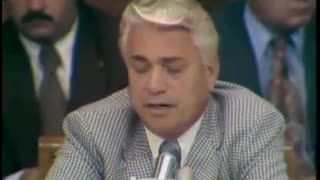 6:37:17
6:37:17
The Memory Hole
3 months agoNixon Impeachment Hearings Day 6 (1974-07-29)
714 -
 1:15:07
1:15:07
Ami's House
18 hours ago $8.42 earnedWhat an ACTUAL Military Expert Thinks of the War in Gaza – Nick Freitas | FULL EP
26.8K14 -
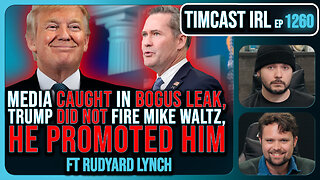 2:54:02
2:54:02
TimcastIRL
9 hours agoLiberal Media CAUGHT In BOGUS LEAK, Trump DID NOT Fire Mike Waltz, HE PROMOTED HIM | Timcast IRL
225K128 -
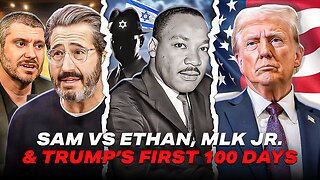 9:05:24
9:05:24
MyronGainesX
17 hours ago $26.66 earnedSam Seder Embarrasses Ethan Klein, The Truth On MLK's Murder, Panel Debate w/ Anton Daniels
81.9K21 -
 1:09:38
1:09:38
Man in America
13 hours agoEXPOSED: How Militaries Worldwide Are Engineering DEPOPULATION w/ Todd Callender
74K48 -
 8:00:02
8:00:02
SpartakusLIVE
11 hours agoNEW Update, NEW Weapons, NEW META?!? || Quads in VERDANSK
34.3K -
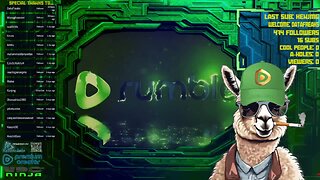 5:14:28
5:14:28
Jokeuhl Gaming and Chat
8 hours agoEmpyrion - Galactic Survival Long Range Jump Aquired
43.8K1 -
 4:42:30
4:42:30
Right Side Broadcasting Network
1 day agoLIVE REPLAY: President Trump Gives Commencement Address at University of Alabama - 5/1/25
170K22 -
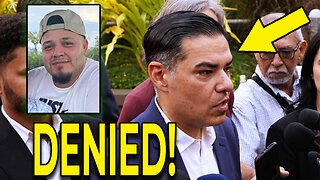 16:58
16:58
T-SPLY
15 hours agoDems’ Bad News: El Salvador Rejects Abrego, Democrats Fume!
109K67 -
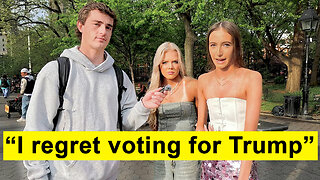 18:56
18:56
Nick Shirley
11 hours ago $7.28 earnedAsking People About Trump’s First 100 Days… How are Americans Feeling?
45.4K47